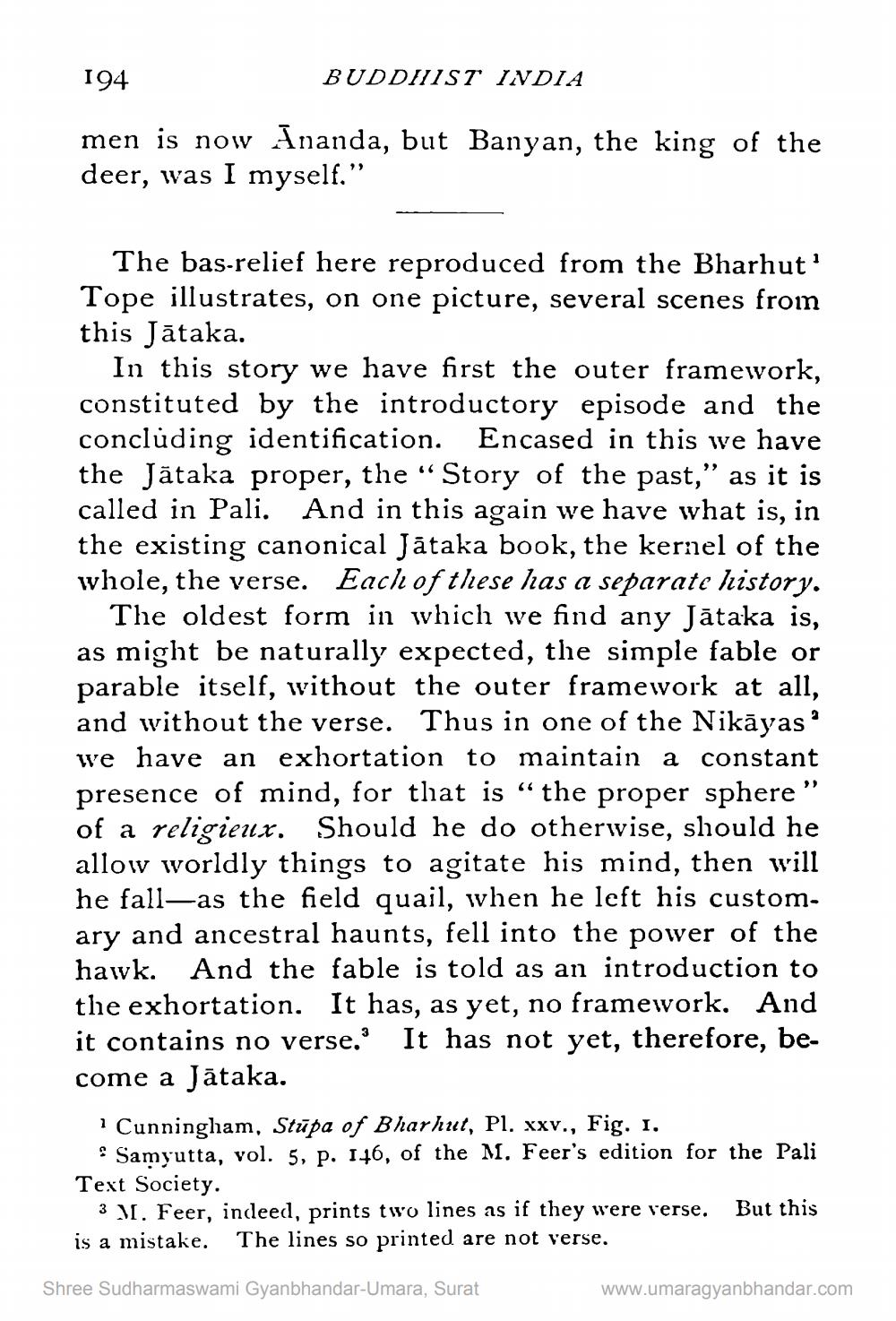________________
194
BUDDHIST INDIA
men is now İnanda, but Banyan, the king of the deer, was I myself.”
The bas-relief here reproduced from the Bharhut Tope illustrates, on one picture, several scenes from this Jātaka.
In this story we have first the outer framework, constituted by the introductory episode and the concluding identification. Encased in this we have the Jãtaka proper, the “Story of the past," as it is called in Pali. And in this again we have what is, in the existing canonical Jātaka book, the kernel of the whole, the verse. Each of these has a separate history.
The oldest form in which we find any Jātaka is, as might be naturally expected, the simple fable or parable itself, without the outer framework at all, and without the verse. Thus in one of the Nikāyas: we have an exhortation to maintain a constant presence of mind, for that is “the proper sphere" of a religieux. Should he do otherwise, should he allow worldly things to agitate his mind, then will he fall-as the field quail, when he left his customary and ancestral haunts, fell into the power of the hawk. And the fable is told as an introduction to the exhortation. It has, as yet, no framework. And it contains no verse. It has not yet, therefore, become a Jataka.
i Cunningham, Stupa of Bharhut, Pl. xxv., Fig. 1. • Samyutta, vol. 5, p. 176, of the M. Feer's edition for the Pali Text Society.
3 M. Feer, indeed, prints two lines as if they were verse. But this is a mistake. The lines so printed are not verse.
Shree Sudharmaswami Gyanbhandar-Umara, Surat
www.umaragyanbhandar.com




